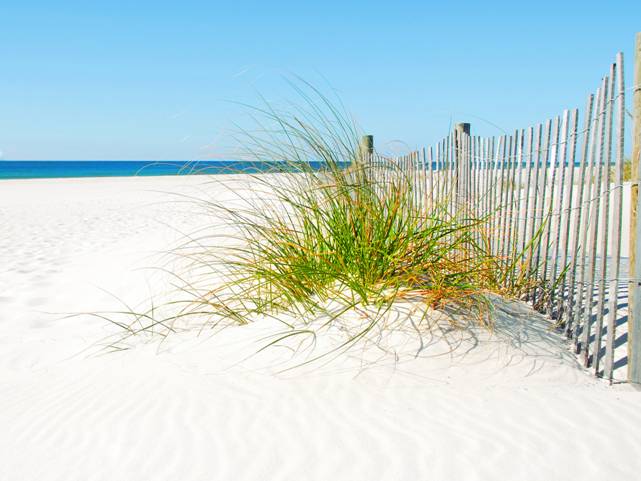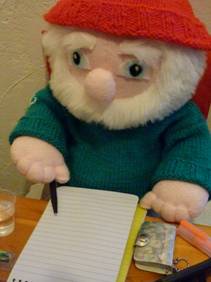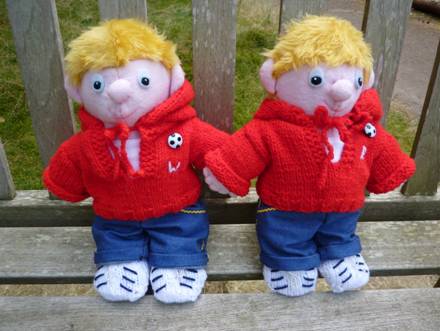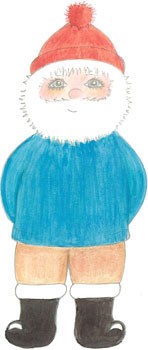
Salty Sam’s Fun Blog for Children
Number 364
Christopher Columbus
Hello Everyone

Welcome to the seventh anniversary of my blog!!!
![]()
![]()
![]()
![]()
![]()
![]()
![]()
ln 1492
Columbus sailed the ocean blue
Have you ever heard this sentence before?
lt is a way to remember the date that Columbus discovered the New World (The American Continent).
Although he was not actually the first European to make his way across the Atlantic; Gunnbjőrn Ulfsson, a Norwegian settler in lceland, had already discovered Greenland in the late 800s.
Later, a Viking called Erik the Red founded a settlement in Greenland in 982.
Erik was born in Norway, and went to live in lceland. From there he sailed the vast distance of 900 nautical miles to get to Greenland.
Actually, he had to leave because he was exiled (thrown out of the country) for bad misbehaviour.
And as you have already guessed, he was called Erik the Red because he had red hair – and a red beard.
He was a superb navigator and sailed in a strong and well-designed Viking ship.
He named this land Greenland, because he thought it would encourage other settlers to come and set up farms and breed livestock.
Actually, Greenland is very white when it is covered with ice and snow – which it is for most of the year nowadays!
Unlike lceland, which is mostly green!
But back to my story…
The settlements in Greenland, established after Erik’s exile was over and he went back to lceland to tell everyone about his idea, attracted several hundred people.
This number grew to several thousand over time. The settlements lasted for about 500 years, but had died out by the time of Columbus’ famous first voyage.
There is also evidence of Viking houses having been built in Newfoundland (just over 1,000 years ago). The Vikings were such good sailors and built such formidable ships that they obviously tried to explore even further west than Greenland.
Columbus too, had great bravery. When he set out to sail across the Atlantic he did not know where he would eventually land, but he was a man with a plan.
Christopher Columbus was born in 1451 in Genoa, ltaly. This was a time in Europe of great discoveries and new inventions.
We call this time the ‘Renaissance’. The word means ‘rebirth’.
The Renaissance touched many different areas of life like: art and science, medicine and literature, education and philosophy.
People had new ideas about astronomy and transport and travelling.
They were mapping out land and sea, and building ships to take them far and wide. They were interested in finding new trade routes and ways of making money. There was fierce competition between nations.
ln his 20s, Columbus went to live in Lisbon, the capital city of Portugal and then he went to live in Spain were he was based for the rest of his life.
He had learnt seamanship as a teenager sailing in the Mediterranean.
But his first voyage in the Atlantic in 1476, was nearly to be his last.
His ship was attacked and set alight off the coast of Portugal, and he had to swim to shore. He made his way to Lisbon, where he got married and had a son, but after his wife died he went to Spain.
There, he joined a few expeditions to Africa, and gained knowledge of the Atlantic Ocean and its currents.
Columbus did not know about the Viking discoveries, but after he discovered the ‘New World’ for himself; many people would follow him there and the links between Europe and the Americas would constantly grow.
Columbus believed that the world was round like a ball.
He thought that the distance between the Canary lslands to the west of Morocco in North Africa and Japan to the East of China was about 2,400 miles – but the Earth is much bigger than that.
(The distance between them is actually 12,200 miles – with America in between.)
Even other nautical experts of the time disagreed with Columbus’ calculation.
Strangely, the calculation made in the second century BC that the world was about 25,000 miles at its circumference, was much more accurate – and this is the theory that the other nautical experts believed in.
Still, nobody knew about the existence of the American continent and thought they would sail straight through to Asia once they had crossed the Atlantic.
Columbus wanted to cross the Atlantic to prove this theory.
He needed funds to do this.
He asked the kings of Portugal, France and England and also the authorities in the Republic of Genoa and then the great trading nation of Venice to help him, but was rejected each time.
He then went to the King of Spain in 1486, who also refused to give support to Columbus.
Eventually though, the king did agree to allocate money to help him.
Columbus had pursued this dream for ten years.
So Columbus, sponsored by King Ferdinand of Spain planned his great expedition of discovery and set out in 1492.
He sailed away from the coast of Spain in a ship called the Santa Maria, with two other ships alongside called the Pinta and the Niña. He, like Erik the Red was a master navigator.
His mission was to find a better route through to lndia – little knowing that he would find an enormous, unknown land mass instead.
There were vast riches of gold and spices to be found in Asia and lndonesia, but travelling across the land between Europe and China was difficult, so a way to these places by sea would make trading so much easier.
His three ships first went to the Canary lslands, and then turned westwards towards the open expanses of ocean.
The crews grew restless. They were not used to travelling such a great distance without sighting land. They weathered storms and lived in fear of great sea monsters.
But Columbus was set in his resolve.
After only 36 days of sailing covering about 150 miles each day, he sighted land.
So where was he actually? l hear you ask.
He landed in the Bahamas. Not a bad choice at all!
He named the place he had reached ‘San Salvador’ (Holy Saviour).
Then he went to Cuba, believing he must have reached islands near China by now, and afterwards went to Hispaniola, now called Haiti, and then the Dominican Republic which he thought might be Japan.
lt might seem funny to us now when we have Google Maps to use to find places; but you have to remember that he was discovered everything for the first time from sea level. There were no maps!
The natives in the Bahamas were gentle and friendly. Columbus named them lndians. He could not get the notion out of his head that he was somewhere in Asia.
These Bahamians were open to trading with Columbus. They had cotton and parrots to trade.
The Santa Maria was wrecked off the coast of Hispaniola.
There, Columbus and his men, with help from some islanders, used timber from the ship to build a settlement. They called the new town ‘Villa de la Navidad’ which is ‘Christmas Town’ in English.
Thirty nine men stayed behind in the town, and the other two ships sailed back to Spain where they received a warm reception.
Columbus was hailed as a hero and given the title of Viceroy of the lndies.
He made another three voyages, after his first, to the Caribbean and South America. Once these lands were known to the Europeans, they were opened up for colonization by them – but of course there were already many people living there. These were people who were native to the area.
On Columbus’ second voyage to the Caribbean, Columbus found that the town he had built had been destroyed and his men all killed.
lgnoring the wishes of the Spanish queen who did not agree with slavery, Columbus established a forced labour policy over the island’s population. His rule was cruel and he treated the local indians very badly.
He rebuilt the colony and prospected for gold.
He didn’t find much gold but, unsurprisingly, managed to provoke great hatred from the people.
Columbus left his two brothers in charge of the settlement, and went on his way.
He still believed that these islands were off the coast of China.
On his third voyage, Columbus finally reached the mainland.
He ventured up the Orinoco River, in what is now known as Venezuela.
ln the meantime, all was not well in Christmas Town.
The two brothers, Bartholomew and Diego did not manage their jobs well, and the islanders and settlers were very unhappy.
The Spanish crown sent an official to arrest Columbus, and took him back to Spain in chains.
The charges were later dropped, but Columbus lost his authority over the colonies and a lot of the riches he had gained from his voyages as well.
But in 1502, after Columbus convinced King Ferdinand that just one more voyage could bring him vast riches, he sailed along the eastern coast of Central America looking once again for the passage through to lndia.
lt was not there to be found, as we now know, and after a while, a storm wrecked one of his ships, stranding the captain and crew on Cuba where the locals, tired of bad treatment from the Spanish colonists, refused to allow the sailors food.
Then Columbus hatched a cunning plan.
He noticed that in an almanac (a kind of diary), there was to be a lunar eclipse on 29th February – this was in 1504.
He told the islanders that he was going to punish them by taking away the Moon.
When the eclipse happened, the natives were so shocked and overawed by the incident, they decided they should re-establish trading links with the Spaniards.
A rescue party was finally sent by the royal governor of Hispaniola and arrived in July to take Columbus and his party back to Spain that November.
Columbus regained some of his riches in May of 1505, although not his titles.
When he died in May 1506, he still believed that he had discovered the sea route through to Asia, even though many others thought that he had discovered another place, a completely new and different place.
One thing was sure.
After Columbus, the world would never be the same again.
There would be good, and there would be bad.
Things only found in the ‘New World’ were brought to the ‘Old World’ – and the other way around.
This is what is known as the ‘Columbian Exchange’.
Europe gained potatoes, coffee, sugar, chocolate, tomatoes and corn.
Europe exported horses, wheat and smallpox.
Plants and animals were exchanged, and so were disease and destruction.
Some cultures were sadly not to survive.
Columbus Day is on the second Monday of October. lt is a holiday in some countries in the New World.
But some people now think that someone who treated other people so badly should not have a special day named after them. The day also represents the beginning of the end for some of the native cultures.
What do you think?
lf you like my blog, please support it by telling all your friends and followers about it.
Thank you!
And see you again next Fun Friday!
Love and kisses
Salty Sam

www.christina-sinclair.com



Bill and Bob’s Joke of the Week![]()
![]()
Bob: Did you hear that the man who writes the weather forecast for the Rocky Bay Gazette has resigned?
Bill: No?
Bob: lt turns out that the piece of seaweed hanging outside his office window kept disagreeing with his rheumatism!

Salty Sam © Christina Sinclair 2015
Unauthorized use and/or duplication of material from this blog without express and written permission from this blog’s author and owner is strictly prohibited.
Links may be used to www.christina-sinclair.com

Picture Gallery
 Viking settlements in North America
Viking settlements in North America

Ferdinand II of Aragon (1452-1516) and his Queen, Isabel of Castile (1451-1504) were Catherine of Aragon’s parents. They married in October 1469. With eventual peace assured at home, Ferdinand and Isabella agreed to sponsor an expedition across the Atlantic Ocean to be led by the now well-known sea captain, Christopher Columbus.
 Christopher Columbus’s Tomb in Seville, Spain
Christopher Columbus’s Tomb in Seville, Spain


 THE SALTY SAM NEWS DESK
THE SALTY SAM NEWS DESK

This week, the children were in Henry’s playroom while it was raining outside.
They decided to create their own board game called a race around Rocky Bay.
They drew a map of the town and then drew a pathway of squares over the top of it.
They had to move along every square from the lighthouse around the town and back to the lighthouse again in a big circle.
The first one back to the lighthouse was the winner.
Can you fill in these gaps to find some of the places in Rocky Bay?
- T _ e R _ _ _ y B _ y T _ a R _ _ _ s
- A _ _ _ _ e A _ _ _ _’s c _ _ _ _ _ e
- T _ e R _ _ _ y A _ _ _ _ r I _ n
- M _ s M _ _ _ _ _ ’s L _ _ _ _ _ g H _ _ _ e
- T _ e H _ _ _ _ _ r W _ _ l
- T _ e R _ _ _ y B _ y H _ _ _ _ _ _ d
- S _ _ _ y C _ _ e B _ _ _ h


*********************
TO ADVERTISE ON THIS BLOG
PLEASE CONTACT:
christina.sinclair.ads@aol.co.uk
*********************


Quick Quiz
Do you know what these phrases mean?




lt’s the Weekend!

HOW TO MAKE A TRAVELLlNG JEWELLERY POUCH
This is a very sumptuous travelling pouch for jewellery for you to take on holiday.
The yarn has a metal thread incorporated in it which gives it a very luxurious look.
If you were making it for a small child, you might prefer to use pink and white yarn.
If you have small parts on your jewellery that stick out (like the posts on earrings), you may want to wrap the items up in tissue paper before you pack them.
JEWELLERY POUCH (KNIT TWO)
Using 4mm knitting needles and black dk yarn cast on 21 stitches
Knit 4 rows of garter stitch
Change to purple dk yarn
Knit 1 row
Purl 1 row
Slip 1 (knit1, purl 1) repeat the last 2 stitches to the end of the row
Repeat the last row 23 times (24 rows of moss stitch)
Purl 1 row
Purl 1 row
Knit 1 row
Purl 1 row
Purl 1 row
Purl 1 row
Knit 4 rows of stocking stitch
Knit 4 rows of garter stitch
Cast off
INNER PANELS (KNIT TWO)
Using 4mm knitting needles and black dk yarn cast on 19 stitches
Slip 1 (knit1, purl 1) repeat the last 2 stitches to the end of the row
Repeat the last row 23 times (24 rows of moss stitch)
Knit 1 row
Knit 1 row
Cast off
CORD (MAKE ONE)
Crochet 70 chains into a length of black yarn to make a cord
TO MAKE UP
- Sew the inner panels to the inside of the outer panels wrong sides together using purple yarn so that you stitches will not show on the outside of the pouch – make sure that you only sew the bottom and sides so that you create a pocket for you items
- Sew the bottom of the bag that has been made in black yarn right sides together using over-sew stitching
- Then turn the bag the right way out and sew up the side seams neatly using over-sew stitching (with wrong sides together)
- You should create a box-shaped bottom to the pouch and three inside pockets to store items
- Thread the cord through the channel at the top of the bag and tie the ends of the cord together

The inside of one of the outside panels

One inside pocket sewn to the inside of one outside panel

The finished pouch
Please note that the material on this blog is for personal use and for use in classrooms only.
It is a copyright infringement and, therefore, illegal under international law to sell items made with these patterns.
Use of the toys and projects is at your own risk.
©Christina Sinclair Designs 2015

Answers to the News Desk Quiz
- The Rocky Bay Tea Rooms
- Auntie Alice’s cottage
- The Rusty Anchor Inn
- Mrs Miggin’s Lodging House
- The Harbour Wall
- The Rocky Bay Headland
- Sandy Cove Beach



Quick Quiz Answers
Honi soit qui mal y pense = may he be shamed who thinks badly of it
Dieu et mon droit = God and my right
(The motto of the monarch of the UK outside Scotland)




This blog is genius.
It really encourages children to read and helps them know how to study at school. This is all really good for their future.
That was the plan Terri!
Thank you for your comment!